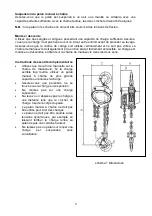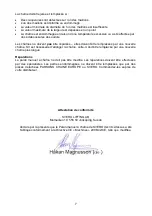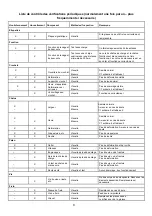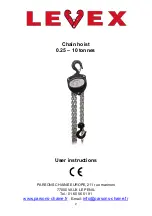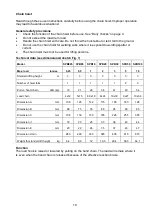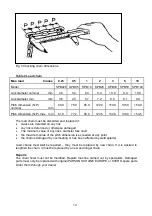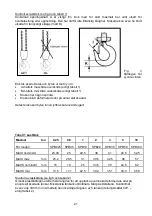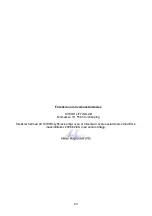
12
Attachment of loads
Check the equipment before use. Improper attachment of loads can be highly dangerous (see
Figs. 2 a
– 2 e).
Fig 2 a
The sling is
applying load
to the hook
tip
Fig 2 b
Excessive top angle
on sling!
max 60°
Fig 2 c
Hook
latch
obstructed
Fig 2 d
Hook tip
subject to
additional
bending stress
Fig 2 e
Load chain
must not
be used
as a sling
Combined lifts
Combined lifts present special risks. This is where two or more chain hoists are used
simultaneously on the same load. Danger to persons and risk of material damage can arise
through dynamic stresses and uneven load distribution causing overload on individual hoists.
Combined lifts must therefore be supervised by a competent person with experience in this type of
lift.
Daily checks
After every working day on which the chain hoist has been used, the following should be checked:
•
Is the chain hoist deformed or otherwise damaged? Are any parts missing?
•
Is any deformation or other damage visible on the suspension device (eye, shackle, bolt,
trolley etc.)?
•
Are the hooks intact or have any hooks opened? Are the hook latches correct and functional?
•
Wipe down the chain hoist and oil the load chain as required.
•
The load chain must be undamaged, i.e. no signs of wear and no deformed or otherwise
damaged links.
•
The load chain must not be kinked or twisted. With two-fall or multi-fall chain hoists there is a
risk of the chain twisting if the bottom hook assembly ends up looped through the chain sling
– usually during refitting or moving the chain hoist between work stations. See Fig 3.
•
The hand chain must also be in good condition.
•
The brake function must be intact.
In the event of faults or failures, the hoist must be repaired and carefully checked by a specialist
before reuse.
Continuous maintenance - lubrication
Oil the hook latches and bearings. Grease the pawl and ratchet and also the gear. Lubrication
must be sparingly and carefully applied so no grease gets on the brake disk. Oil the load chain for
longer life.
Periodic checks
Periodic checks are normally carried out yearly to detect and remedy any faults. If required (e.g.
high frequency of use), more frequent chec
ks may be carried out. See “Checklist for periodic
checks”. Measure hooks and chain to detect any changes in shape.



